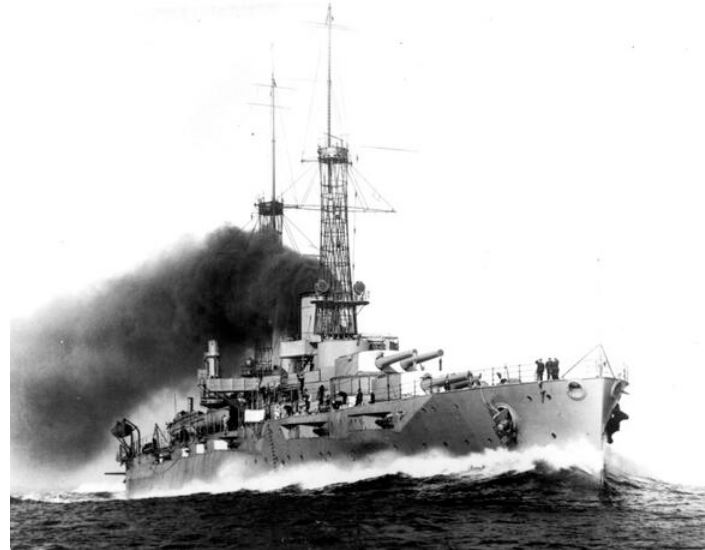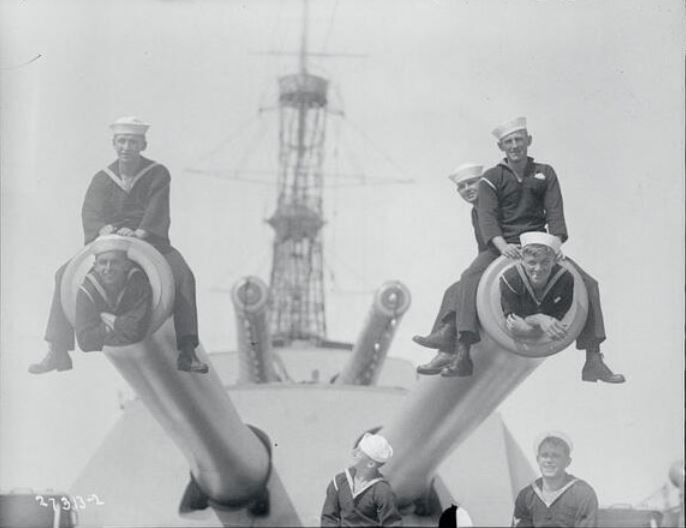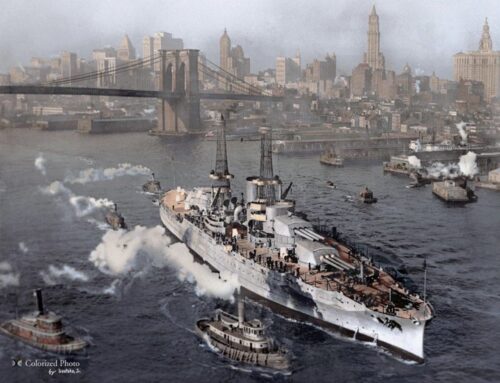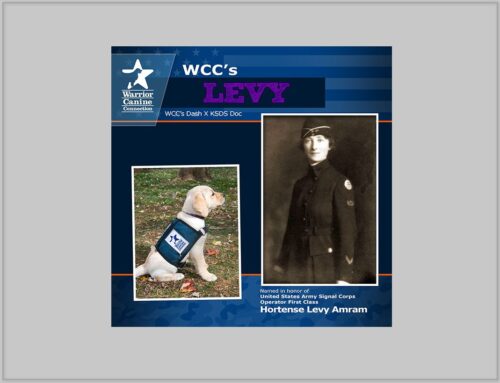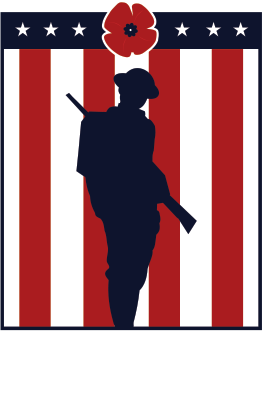After serving in WWI, the USS Texas (BB-35) played a crucial role on D-Day in WWII
Published: 9 June 2025
By Elisabeth Edwards
via the War History Online website
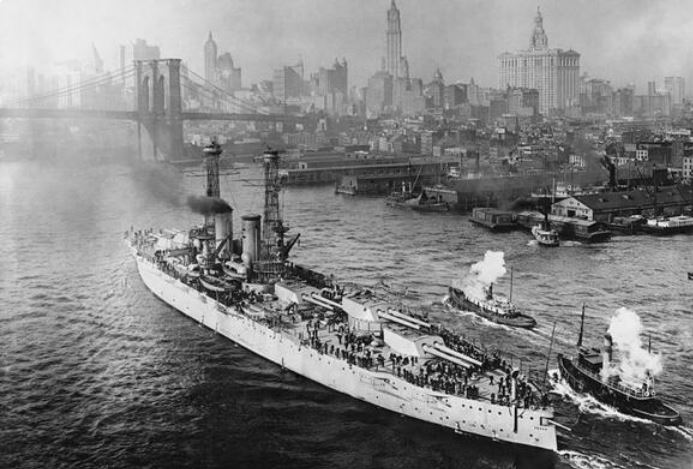
USS Texas 1918
USS Texas in New York Harbor, 1918. (Photo Credit: Schenectady Museum / Hall of Electrical History Foundation / CORBIS / Getty Images)
The USS Texas (BB-35) was a powerhouse in the U.S. Navy, seeing action in both World War I and World War II. Renowned for its heavy armament and cutting-edge engineering for the time, the battleship played a vital role in supporting Allied operations during the D-Day invasion. On that historic day, her crew made a daring move—deliberately edging the ship closer to enemy territory to provide more accurate fire support. This bold maneuver exposed the vessel to enemy artillery but proved instrumental in neutralizing German defenses and aiding the success of the landings.
New York-class super-dreadnought battleships
The USS Texas was a New York-class battleship commissioned in March 1914, just before World War I began. She was the second ship in her class and an upgrade from the earlier, less powerful Wyoming-class. Seen as the U.S. Navy’s first real “super dreadnoughts,” both Texas and her sister ship, the USS New York (BB-34), were built for serious firepower and were heavily armed.
Their main weapons were ten 14-inch deck guns. These were backed up by an array of secondary arms, including four QF 3-pounder Hotchkiss saluting guns, twenty-one 5-inch guns, and two QF 1-pounder “pom-poms.” They also had four torpedo tubes that could launch Bliss-Leavitt Mark 3 torpedoes.
In addition to their heavy weapons, Texas and New York were well-armored and ran on water-tube boilers paired with triple-expansion steam engines. This gave them a top speed of just over 24 miles per hour and a cruising range of about 1,825 miles.
USS Texas‘ service during World War I
Since the United States did not enter World War I until April 1917, the USS Texas initially saw action following the Tampico Incident, a conflict sparked by rising tensions between US Navy sailors and Mexican soldiers. Shortly after her commissioning, Texas was dispatched to Mexico without undergoing the customary shakedown cruise, spending two months stationed off the coast of Veracruz.
After a short stint with the Atlantic Fleet, Texas returned to Veracruz. In 1916, she made history as the first US battleship to be outfitted with 3-inch anti-aircraft guns and to incorporate directors and rangefinders for controlling gunfire. Although these technologies have largely evolved, their fundamental principles are still applied today.
Texas alternated her training operations between New England and Virginia, conducting winter tactical and gunnery exercises in the West Indies. Once the US entered into WWI, the battleship crossed the Atlantic to join the Grand Fleet, where she witnessed the first American shots of the war.
While serving with the Grand Fleet, Texas supported the British squadron assigned to blockade operations in the North Sea. Working alongside other vessels, she also escorted American minelayers, contributing to the extensive North Sea Mine Barrage, a minefield stretching from Norway to the Orkney Islands off the northern coast of Scotland.
→ Read the entire article on the War History Online website.
External Web Site Notice: This page contains information directly presented from an external source. The terms and conditions of this page may not be the same as those of this website. Click here to read the full disclaimer notice for external web sites. Thank you.
